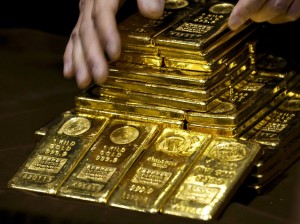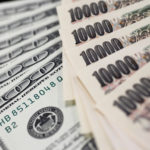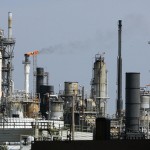 Gold traded little changed on Tuesday as investors weighed the impact of recent higher prices on demand against Fed stimulus outlook. Assets in the SPDR Gold Trust, the biggest bullion-backed ETF remained unchanged, after being expanded the most since 2011. Strong physical demand from China fanned positive sentiment, while a stronger dollar weighed.
Gold traded little changed on Tuesday as investors weighed the impact of recent higher prices on demand against Fed stimulus outlook. Assets in the SPDR Gold Trust, the biggest bullion-backed ETF remained unchanged, after being expanded the most since 2011. Strong physical demand from China fanned positive sentiment, while a stronger dollar weighed.
On the Comex division of the New York Mercantile Exchange, gold futures for settlement in February traded little changed at $1 251.60 per troy ounce by 08:06 GMT. Prices touched a session high at $1 254.70, while day’s low was touched at $1 250.90 an ounce. Yesterday prices hit $1 257.90 per troy ounce, the strongest level since December 11th.
Gold futures settled last 5-day period 0.45% higher, after adding 0.95% in the previous week. However, the precious metal settled last year 28% lower, the steepest annual decline since 1981 as investors lost faith in the metal as a store of value.
“Gold has been aided higher by physical demand, which tends to pull back when prices go up; U.S. economic data and monetary policy, and subsequently the dollar, will continue to be the main drivers,” said Zhu Siquan, an analyst at GF Futures Co., a unit of the Guangzhou-based firm that bought Natixis Commodity Markets Ltd. last year, cited by Bloomberg.
Chinese demand
On the Shanghai Gold Exchange, trading volumes for bullion of 99.99 percent purity declined to a 2-week low yesterday.
However, trading volumes exceeded 13 000 kilograms every day last week, in comparison with daily average of 12 782 kilograms last year. A report also showed that deliveries by the Shanghai Gold Exchange to China almost doubled in 2013.
According to data by the World Gold Council, China probably overtook India as the largest global consumer in the previous year.
Fed stimulus outlook
Fed policy makers said on December 18th that they will reduce monthly asset purchases to $75 billion from $85 billion, underscoring improving labor market conditions.
The central bank will probably continue to pare stimulus by $10 billion at each policy meeting before exiting the program in December, according to a Bloomberg News survey of 41 economists, conducted on January 10th. The Federal Open Market Committee is scheduled to meet next on January 28-29.
Federal Reserve Bank President for Minneapolis, Narayana Kocherlakota, also a voting member on monetary policy this year, said last week that Fed officials have to do more in order to stimulate the economy.
Narayana Kocherlakota’s comments provided some support to gold prices as investors are keeping a close eye on every single US economic indicator and comments from Fed officials to further gauge the size and the timing of Fed stimulus cuts.
However, a recent series of overall upbeat data provided signs that US economic growth is accelerating and recovery seemed sustainable. US home construction slowed less than analysts had projected, while industrial output expanded for a fifth consecutive month. Only the consumer sentiment came at a lower-than-expected reading in January, but this was not enough to change the overall market consensus that Fed will continue tapering throughout 2014.
A stronger US dollar weighed. The US dollar index, which measures the greenback’s performance against a basket of six major peers, rose by 0.21% on Tuesday to trade at 81.41 by 08:05 GMT. Prices shifted in a daily range between day’s high and low, 81.41 and 81.26. The contract settled the week 0.76% higher. Strengthening of the dollar makes commodities priced in it more expensive for foreign currency holders and limits their appeal as an alternative investment.
Assets in the SPDR Gold Trust, the biggest bullion-backed ETP, remained unchanged at 797.05 tons, after surging by 0.9% on Friday, the largest daily increase since November 2011. The fund has lost 41% of its holdings in 2013. A total of 553 tons has been withdrawn in 2013. Billionaire hedge-fund manager John Paulson who holds the biggest stake in the SPDR Gold Trust told clients on November 20 that he wouldn’t invest more money in his gold fund because it isn’t clear when inflation will accelerate.





